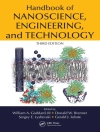This multi-author reference work provides a unique introduction to the currently emerging, highly interdisciplinary field of those transport processes that cannot be described by using standard methods of statistical mechanics. It comprehensively summarizes topics ranging from mathematical foundations of anomalous dynamics to the most recent experiments in this field. In so doing, this monograph extracts and emphasizes common principles and methods from many different disciplines while providing up-to-date coverage of this new field of research, considering such diverse applications as plasma physics, glassy material, cell science, and socio-economic aspects.
The book will be of interest to both theorists and experimentalists in nonlinear dynamics, statistical physics and stochastic processes. It also forms an ideal starting point for graduate students moving into this area. 18 chapters written by internationally recognized experts in this field provide in-depth introductions to fundamental aspects of anomalous transport.
Tabela de Conteúdo
In Memoriam: Radu Balescu
Part I FRACTIONAL CALCULUS AND STOCHASTIC THEORY
Threefold Introduction to Fractional Derivatives
(Rudolf Hilfer)
Random Processes with Infinite Moments
(Michael F. Shlesinger)
Continuous Time Random Walk, Mittag-Leffler Waiting Time and Fractional Diffusion: Mathematical Aspects
(Rudolf Gorenflo and Francesco Mainardi)
Introduction to the Theory of Levy Flights
(Alexei V. Chechkin, Ralf Metzler, Joseph Klafter, and Vsevolod Yu. Gonchar)
Fractional Diffusion Models of Anomalous Transport
(Diego del-Castillo-Negrete)
Anomalous Kinetics Leads to Weak Ergodicity Breaking
(Eli Barkai)
Part II DYNAMICAL SYSTEMS AND DETERMINISTIC TRANSPORT
Deterministic (Anomalous) Transport
(Roberto Artuso and Giampaolo Cristadoro)
Anomalous Transport in Hamiltonian Systems
(Eduardo G. Altmann and Holger Kantz)
Anomalous Heat Conduction
(Stefano Lepri, Roberto Livi, and Antonio Politi)
Part III ANOMALOUS TRANSPORT IN DISORDERED SYSTEMS
Anomalous Relaxation in Complex Systems: From Stretched to Compressed Exponentials
(Jean-Philippe Bouchaud)
Anomalous Transport in Glass-Forming Liquids
(Walter Kob, Gustavo A. Appignanesi, J. Ariel Rodriguez Fris, and Ruben A. Montani)
Subdiffusion-Limited Reactions
(Santos Bravo Yuste, Katja Lindenberg, and Juan Jesus Ruiz-Lorenzo)
Anomalous Transport on Disordered Fractals
(Karl Heinz Hoffmann and Janett Prehl)
Part IV APPLICATIONS TO COMPLEX SYSTEMS AND EXPERIMENTAL RESULTS
Superstatistics: Theoretical Concepts and Physical
Applications
(Christian Beck)
Money Circulation Science –
Fractional Dynamics in Human
Mobility
(Dirk Brockmann)
Anomalous Molecular Displacement Laws in Porous Media and
Polymers Probed by Nuclear Magnetic Resonance Techniques
(Rainer Kimmich, Nail Fatkullin, Markus Kehr, and Yujie Li)
Anomalous Molecular Dynamics in Confined Spaces
(Rustem Valiullin and Jorg Karger)
Paradigm Shift of the Molecular Dynamics Concept in the Cell Membrane: High-Speed Single-Molecule Tracking Revealed the Partitioning of the Cell Membrane
(A. Kusumi, Y. Umemura, N. Morone, and T. Fujiwara)
Sobre o autor
RAINER KLAGES, lecturer in applied mathematics at the Queen Mary University of London, studied physics and philosophy at the Technical University of Berlin. His research stations were Maryland/USA, Budapest, Brussels, and Dresden and his main research interests are nonlinear dynamics, complex systems, and nonequilibrium statistical mechanics.
GUNTER RADONS holds the Chair for theoretical physics, complex systems and nonlinear dynamics at the Institute of Physics, Chemnitz University of Technology. His main research interests are theoretical foundations of complex systems, data analysis and modelling, applications in natural sciences and engineering.
IGOR M. SOKOLOV holds the Chair for statistical physics and nonlinear dynamics at the Institute of Physics, Humboldt-University at Berlin. His main research interests cover statistical physics as well as physical chemistry of condensed and soft matter, especially problems regarding disordered systems and polymers.












